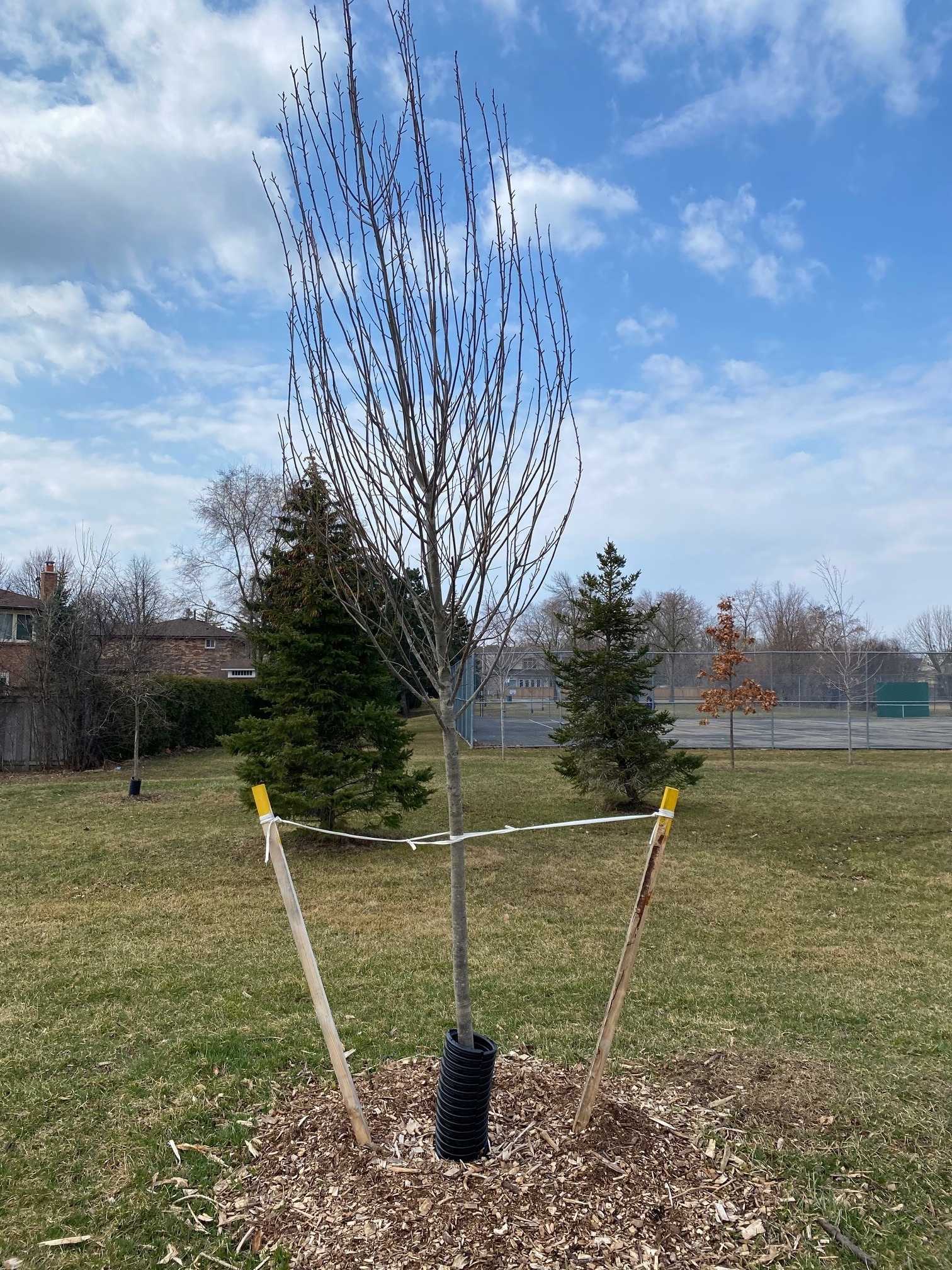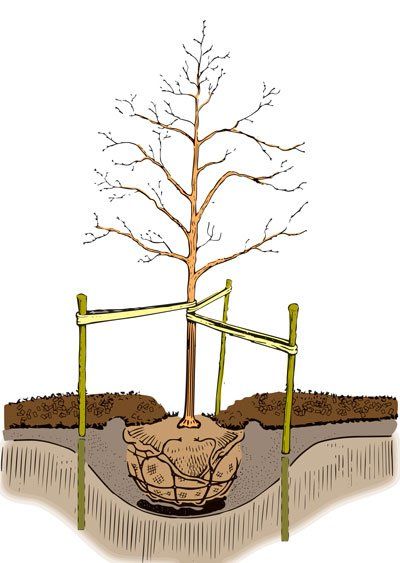To Stake or not to Stake
Anelia’s Tree Corner
Interesting facts and tree care tips from certified arborist Anelia Tichkova
To Stake or not to Stake?
It is almost planting season! Adding native trees and shrubs to your property has many benefits and we often enjoy doing this on our own. There are situations when a newly planted tree may need some support but in others, staking can do more harm than good.
Here are a few things you should know before you make the decision:
- The natural movement and swaying of a tree trunk actually help to strengthen and stimulate the development of its roots. The “sway” of the trunk creates more room in the earth for the root system to spread and work their way deeper into the soil. Letting a tree grow without a stake also forces it to become a hardier sapling since it does not have a post to rely on for constant support.
- Staking a tree is beneficial when the trunk needs protection and/or support from environmental factors such as wind or storms. Utilizing a tree stake can be most advantageous for trees with undeveloped root balls or heavy branches. The stake can help anchor the roots and allow them time to get established.
- When staking a tree, it may grow straighter and taller but it may have a weaker trunk and root system if the support is kept for too long.
- The tree size and species, location and environmental conditions – all of these should be determining factors. When staking may be needed: bare root trees, top-heavy trees, tall trees with small root balls, very windy sites and open fields, sandy soils.
- If you notice a
newly planted tree leaning, you may consider staking in order for the tree to grow up straight.
If you decide you need to stake your tree:
- A tree should only be staked for a short period of time, a general rule of thumb is one growing season only (in some circumstances up to 2 years)
- Improper staking can cause girdling or tree-trunk abrasion so consider the following:
- Stakes should be placed in a way that they are not higher than 2/3 the height of the tree
- In order to decide where to tie the stakes to the tree: Hold the tree in one hand and rock it gently back and forth. Move your hand up and down until you find the height at which the tree stays upright when moved. This is where you should put the tree straps for staking. It’ll be about 1/2 to 2/3 of the way up the trunk.
- Materials used to tie the tree to the stake should be soft and flexible and allow for movement all the way down to the ground.
- Monitoring your tree and adjusting ties when needed is important to ensure healthy growth
- Once a tree trunk reaches a diameter of three inches, or after one growing season, all stakes and ties should be removed.
CONTACT US
CANADIAN REGISTERED CHARITY #848592010RR0001
As stewards of the earth, we have the responsibility to honour and respect the four directions, land, waters, plants, animals, and ancestors that walked before us, and all of the wonderful elements of creation that exist. Oakvillegreen respectfully acknowledges that our work with the community takes place within the Treaty Lands and Territory of the Mississaugas of the Credit First Nation, represented by Treaty 14 and Treaty 22, and on the traditional territories of the Anishinaabeg (Ah-nish-in-nah-beg), Attawandaron (At-tah-wahn-da-ron), Haudenosaunee (Ho-den-oh-sho-nee) and Metis peoples. We honour these rightful caretakers of this sacred land surrounding the Great Lakes, and we are grateful for their teachings.
All Rights Reserved | Oakvillegreen Conservation Association
Site Designed & Developed By Client First Web Design & Graphics


